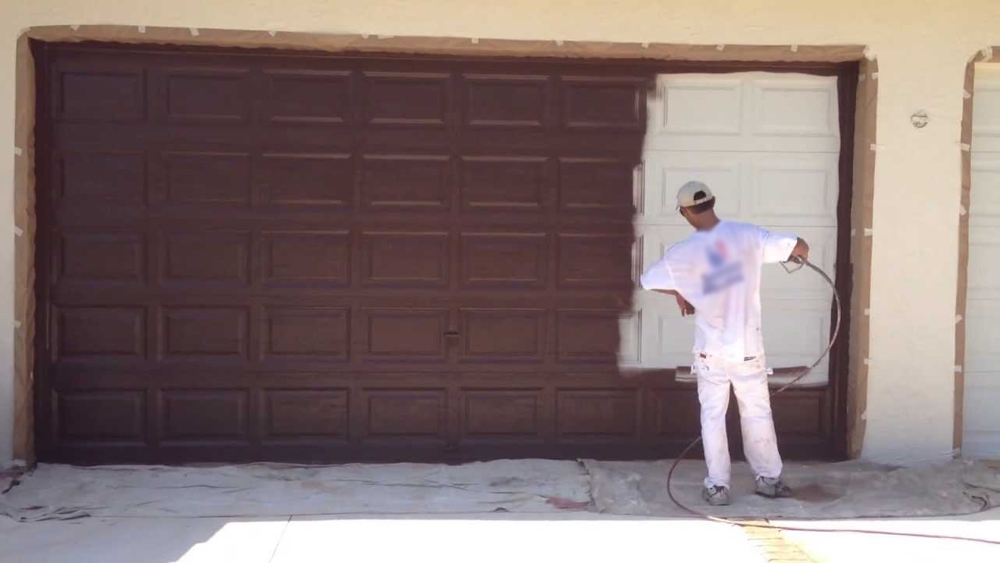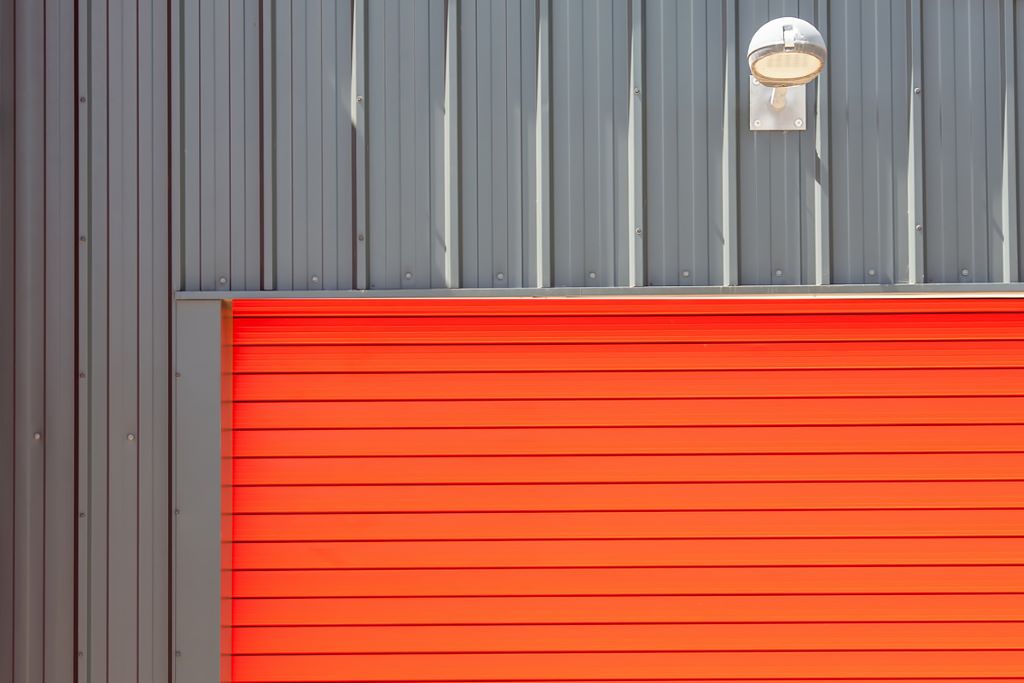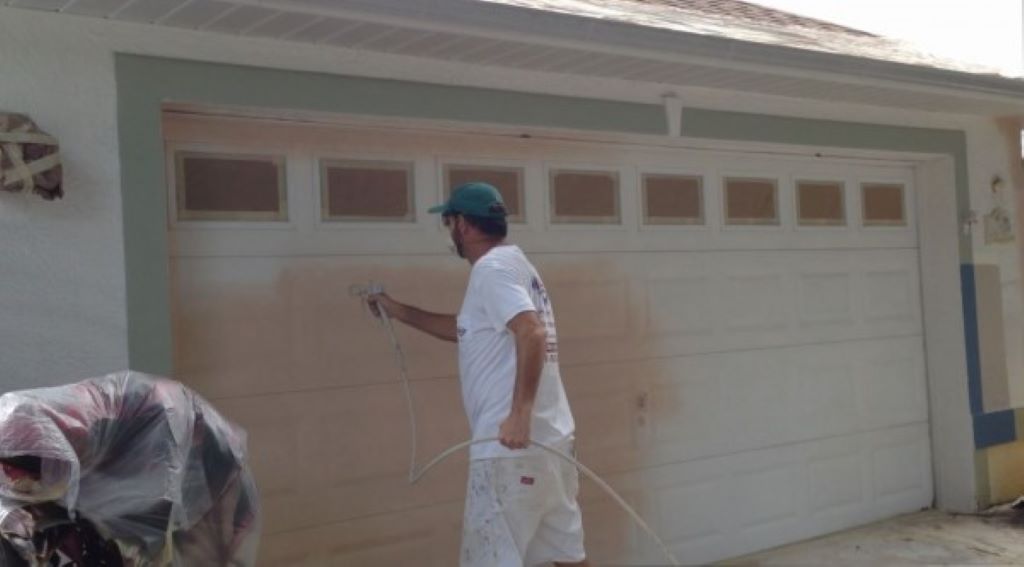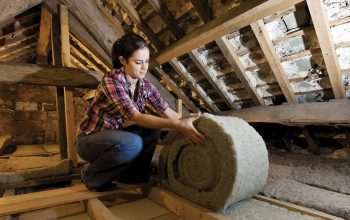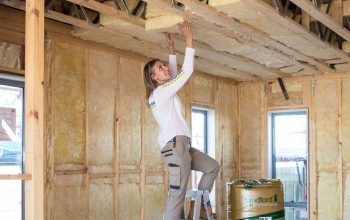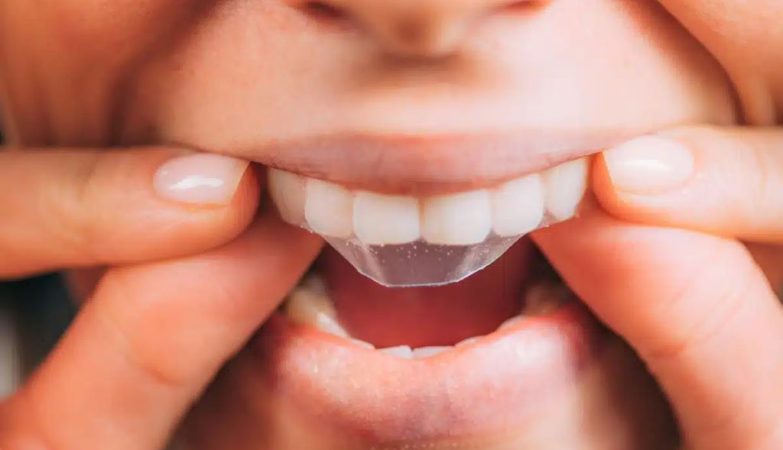Painting the exterior of your home can completely transform its look and add value. However, it can also be an expensive project if you hire professionals. Painting just one exterior wall using aluminum garage door paint is an affordable way to update the curb appeal without breaking the bank. As someone who has tackled this type of project before, I will walk you through the process step-by-step.
Why Use Aluminum Garage Door Paint?
Aluminum garage door paint has a high-gloss, reflective finish that mimics the look of a brand-new aluminum garage door. It’s formulated to bond exceptionally well to exterior surfaces like stucco, wood, concrete, and vinyl siding.
Unlike typical exterior paints, the resins in aluminum garage door paint create an extra tough, flexible coating that can expand and contract with the siding as temperatures change without cracking or peeling. This makes it perfect for the garage door material and adds that modern metallic look to an exterior wall.
Choosing the Right Paint
There are a few different aluminum garage door paint brands, but I prefer Rust-Oleum’s Gloss Protective Enamel. It provides excellent UV resistance to prevent fading, a high-gloss finish, and superior adhesion.
You’ll want the actual aluminum-colored paint, not just silver or gray. The aluminum flakes reflect light uniquely, giving that signature a factory-finish look.
When purchasing the paint, pay attention to the spread rate noted on the can. You’ll need enough to cover the entire wall area you intend to paint. Don’t forget that a second coat is recommended!
Preparing the Wall Surface
Proper surface prep is the key to getting great results from aluminum garage door paint. It would be best to start with a clean wall free of dirt, oil, chalking paint, mildew, and other contaminants that could interfere with adhesion.
Take some time to:
- Wash the wall with an exterior cleaning solution or TSP substitute using a garden hose or pressure washer. Rinse thoroughly.
- Scrape off any loose, flaking, or peeling paint.
- Sand glossy surfaces to dull the finish so the new paint can grab hold.
- Patch any holes or cracks with exterior spackling.
- Spot prime any bare wood or metal with a suitable primer.
- Caulk around trim, lights, outlets, and seams or joints that allow moisture behind the paint.
- Apply painter’s tape if needed to protect areas you don’t intend to paint.
- Check the weather forecast – avoid painting in rainy, extremely humid, or cold conditions.
Proper prep takes some elbow grease, but the aluminum finish must look its best. The paint can’t adhere as necessary if you skip this step. Think of it like preparing the wall to accept the gift of a fresh new look.
Paint Application Tips
When you’re ready to start painting, follow these tips for getting the job done right:
1. Stir the paint before and during use
The aluminum flakes in the paint settle to the bottom of the can. Stir thoroughly with a paint stick before pouring the paint into your tray or roller pan. Continue to stir occasionally as you paint to maintain even color distribution.
2. Apply in full strokes and spread evenly
Rolling on in short, choppy strokes can leave an uneven finish. Make long, full strokes from top to bottom of the wall, spreading the paint evenly.
3. Maintain a wet edge
Work in sections, applying paint from start to finish in one area before moving on. Don’t let the paint dry between sections; you may get lap marks.
4. Thin the paint if spraying
If using an airless sprayer, thin the paint by adding 1/4 cup of water per quart and mix well. Multiple thin coats sprayed allow for a smoother finish versus one thick coat.
5. Allow proper drying between coats
Let the first coat dry completely for at least 24 hours before adding the second coat. Cool temperatures or high humidity can affect drying time. The coating should be fully hardened and not tacky before recoating.
6. Apply even coverage on the second coat
The second coat of paint is essential for a complete hide and an even look. Apply in the same method as the first coat.
7. Clean equipment promptly after use
Once done painting, thoroughly clean brushes, rollers, spray tips, and other equipment with mineral spirits or paint thinner so they are ready for future jobs.
Avoiding Common Problems
Applying aluminum garage door paint does take some finesse, but avoiding these common mistakes will help ensure you get picture-perfect results:
- Don’t paint in direct sunlight or on hot surfaces, which can cause the paint to dry too quickly and affect coverage.
- Don’t apply paint that is too thick, or sags and runs can develop. Going on too thin can reduce the reflective effect.
- Don’t substitute cheaper silver paints or use aluminum coatings meant for metal roofs. The results won’t compare.
- Don’t skip the second coat; you’ll likely have uneven coverage and translucent sections.
- Don’t paint over dirt, grease/oil, excessive chalkiness, mildew, or flaking paint. The paint won’t stick.
- Don’t paint if rain or heavy dew is expected within 24 hours of application.
Achieving a Professional-Looking Finish
Following good paint practices like proper surface preparation, applying in appropriate weather conditions, using high-quality applicators and tools, following the spread rate recommendations, allowing adequate drying time between coats, and applying two full coats will help you achieve results on par with a professional contractor.
The aluminum garage door paint will dry to a super stiff, glossy metallic finish that looks like the wall has been resurfaced. Standing back to admire how the light plays off your freshly painted aluminum surface makes the hard work worthwhile. It pays off!
FAQs
What kind of brushes or rollers should be used?
Use high-quality nylon or polyester bristle brushes and woven acrylic or microfiber roller covers. Avoid foam rollers – they can cause stippling.
How long does the finish last?
Properly applied aluminum garage door paint will generally last 7-10 years before needing to be repainted, possibly longer if well maintained.
Can it be used on surfaces other than vinyl siding?
Yes, when applied over a suitable primer, this paint adheres well to many exterior materials, including wood, stucco, concrete, and metals; Fiber cement board is another option.
What’s the best way to maintain the finish?
To keep aluminum-painted walls looking their best, perform occasional light washing with a pressure washer to remove dirt and grime. Spot clean any oil/grease stains. Touch up chips promptly.
What safety precautions should be taken?
Use goggles, gloves, and a respirator when sanding, scraping, or spraying. Work in a well-ventilated area and keep children and pets away from the work area.
Conclusion
Painting just one exterior wall with aluminum garage door paint allows you to test out this eye-catching metallic look on your home inexpensively. While considering whether you can replace a garage door spring yourself, it’s crucial to approach the task with caution; similarly, following the preparation, application, and care recommendations in this guide for your painting project will help you achieve beautiful, long-lasting results. The shiny finish of aluminum garage door paint on your wall is attention-grabbing, so be ready for lots of compliments from neighbors and passersby when you take on this unique painting project!

